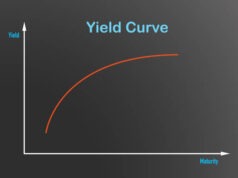There are many different strategies aimed at optimizing the sales process and increasing their efficiency. One of the most effective strategies was developed by Robert B. Miller and Stephen E. Heiman and named after its authors.
The Miller Heiman sales methodology offers an encompassing framework designed to navigate intricate sales scenarios effectively. It supplies a lucid path for sales professionals to maintain concentration and seal deals proficiently.
Within this guide, we will lead you through an exhaustive understanding of the Miller Heiman sales process, while also exploring how it aligns with crucial leadership principles and how you can apply sales techniques successfully.
Understanding the Miller Heiman Sales Process
The Miller Heiman sales process is a strategic method tailored for managing complex business-to-business (B2B) transactions. Its foundation rests upon creating mutually beneficial outcomes for both the seller and the buyer. Here, the seller aids the buyer in resolving issues and achieving enhanced returns on investment (ROI).
Central to the Miller Heiman sales process is the identification of pivotal decision-makers involved in the purchasing journey. This approach underscores comprehending their level of influence and authority and crafting a tailored sales strategy to cater to their unique needs and concerns.
Origins of the Miller Heiman Sales Process
Robert B. Miller and Stephen E. Heiman formulated the Miller Heiman sales process during the late 1970s. Miller, a sales consultant, and Heiman, a sales trainer, united to establish the Miller Heiman Group in 1978, focusing on delivering sales training and consultancy services.
Their collaborative effort yielded a systematic blueprint for addressing intricate sales situations. They held the conviction that successful sales representatives must grasp customers’ decision-making processes and adjust their strategies accordingly. The sales process they devised consisted of distinct steps, each necessitating precise actions and skills.
The Miller Heiman sales process has evolved over time to adapt to shifting business landscapes and remains a prominent technique for enhancing sales team performance.
Key Elements of the Miller Heiman Sales Approach
The core components of the Miller Heiman sales process encompass:
- Strategic Selling: A methodical approach that centers on comprehending prospect needs, pinpointing decision-makers, and formulating customized solutions that cater to these needs.
- Conceptual Selling: Focusing on a prospect’s perception of value, emphasizing that prospects invest in products or services they deem valuable.
- Large Account Management Process (LAMP): A strategic strategy for managing substantial accounts, involving understanding the prospect’s business, cultivating relationships with key decision-makers, and offering tailored solutions.
- Funnel Scorecard: An evaluative tool to gauge sales process efficacy, identifying areas for improvement and tracking progress over time.
The Workflow of the Miller Heiman Sales Process
The Miller Heiman sales process entails five core steps:
Step 1: Identifying Purchase Decision Influencers
This phase involves recognizing all stakeholders participating in the purchasing decision and understanding their roles. This encompasses decision-makers and other influential parties. Gathering information about their objectives, priorities, and requirements is vital to aligning solutions effectively.
Step 2: Assessing Crucial Buying Modes
Understanding the distinct buying modes within the decision-making process is pivotal. These encompass a prospect’s needs, priorities, and decision timeline. The Miller Heiman model outlines four buying modes:
- Growth: Prospects seeking expansion opportunities.
- Status Quo: Content with the present situation, not actively seeking change.
- Replacement: Actively exploring alternatives to current solutions.
- Commodity: Focused on price, seeking budget-friendly solutions.
Step 3: Gauging Market Position
Assessing strengths and weaknesses in comparison to competitors is central. Defining a unique value proposition and evaluating market share, customer satisfaction, and brand reputation are vital aspects.
Step 4: Addressing Red Flags and Objections
Identifying potential objections or concerns that may arise is essential. Whether related to pricing, implementation, or support, devising strategies to counter and overcome these issues is crucial.
Step 5: Aligning for Resolution and Closure
The ultimate stage involves aligning the prospect’s requirements with your solution, aiming to convert them into a customer. Creating a customized solution that aligns with their priorities enhances the likelihood of securing the deal.
The Miller Heiman Blue Sheet
Integral to the Miller Heiman Strategic Selling concept, the Blue Sheet serves as a comprehensive document. It encompasses buying influencers, challenges, strengths, favorable outcomes, competition, and the ideal customer profile (ICP).
This tool prompts sales professionals to meticulously strategize, ensuring all necessary steps are taken to advance the deal and preempt potential obstacles. Integration of CRM data with the Blue Sheet provides deeper insights into deal performance and reasons behind specific losses.
Advantages and Disadvantages of the Miller Heiman Sales Process
Advantages:
- Structured Approach: The methodology offers an organized approach that aids sales reps in maintaining focus and organization.
- Customer-Centric: Prioritizing prospect needs fosters stronger relationships and improved deal success.
- Proven Track Record: The approach’s successful adoption by various sales organizations underscores its efficacy.
Disadvantages:
- Time-Consuming: Implementation may be time-intensive, especially for newcomers to the approach.
- Complexity: Some individuals perceive the methodology as intricate, potentially hampering effective execution.
- Targeted Application: Primarily suited for intricate sales cycles, it may not fit all sales scenarios optimally.
- Cost of Adoption: Training and certification costs can be prohibitive for certain sales teams.
Leveraging the Miller Heiman Sales Process with Revenue Grid
Revenue Grid offers sales coaching software and tools to facilitate the implementation and enhancement of the Miller Heiman sales process:
- AI-Driven Engagement Signals: Identify high-potential prospects efficiently.
- Email Automation: Streamline communication and meeting scheduling.
- Real-Time Insights: Tailor messaging and positioning using real-time data.
- Deal Management: Collaboratively move deals forward using deal management tools.
By harnessing Revenue Grid, you streamline your sales process and elevate your success prospects with the Miller Heiman sales methodology. Begin a 14-day free trial today to experience the benefits firsthand.
Summing up
The essence of the strategy is as follows:
- Classify various contacts/roles by their impact on the sales cycle.
- Then determine the level of support for your proposal: those who will oppose it, who will support it.
- Work with these groups of contacts to help them reach a consensus on a purchase decision.
The goal of this strategy is to build long-term partnerships with customers instead of concluding one-time contracts. The objective of the strategy is to ensure maximum customer satisfaction. Benefiting from a purchase, the customer then treats that benefit as one of their own intangible assets.
For this logic to work, the seller must strive to meet the needs and requirements of the buyer. That is why it is so important for him to understand the problems and goals of his client. The more clearly and accurately he can convey to him the need to purchase goods, the more targeted his sales strategy will be.


































